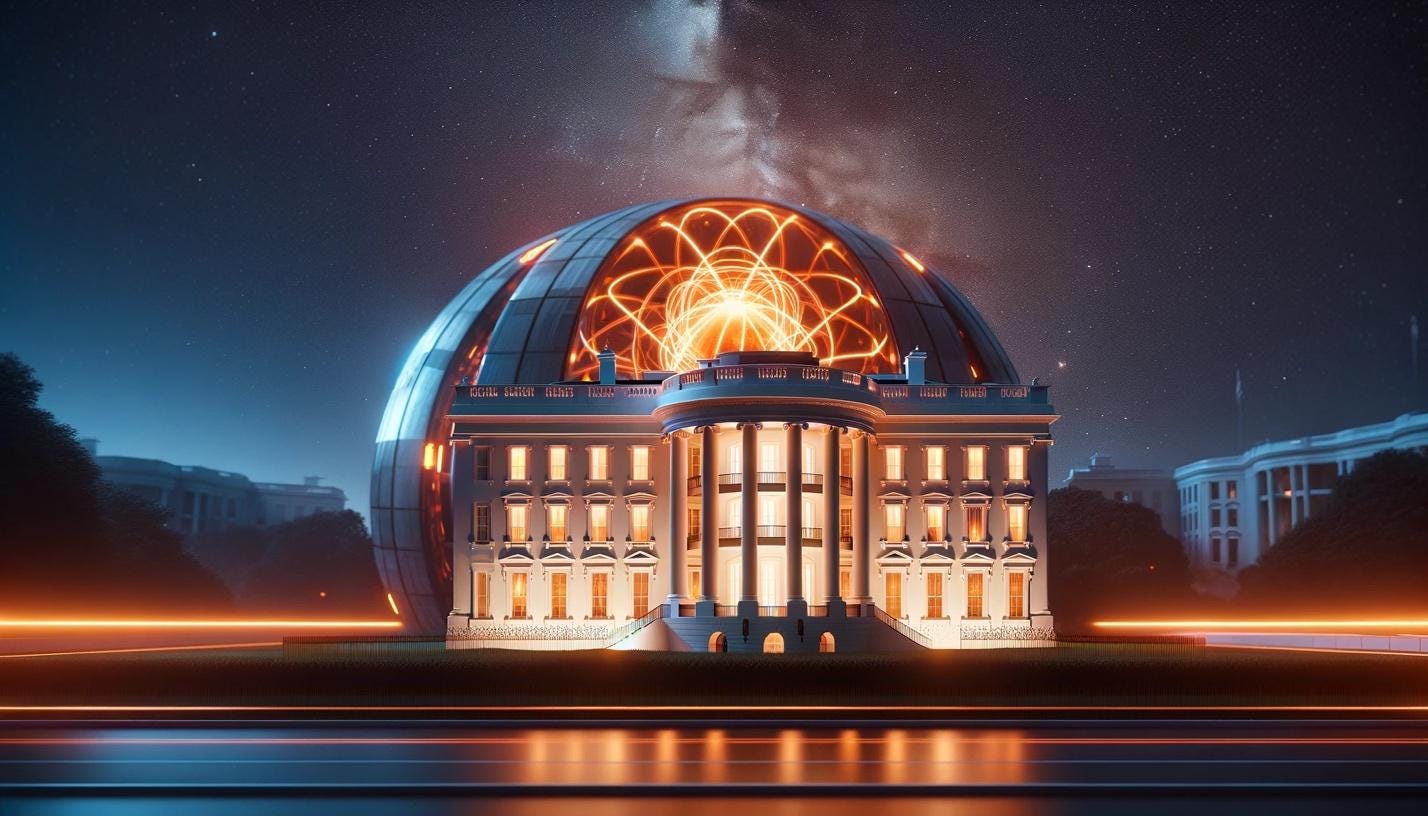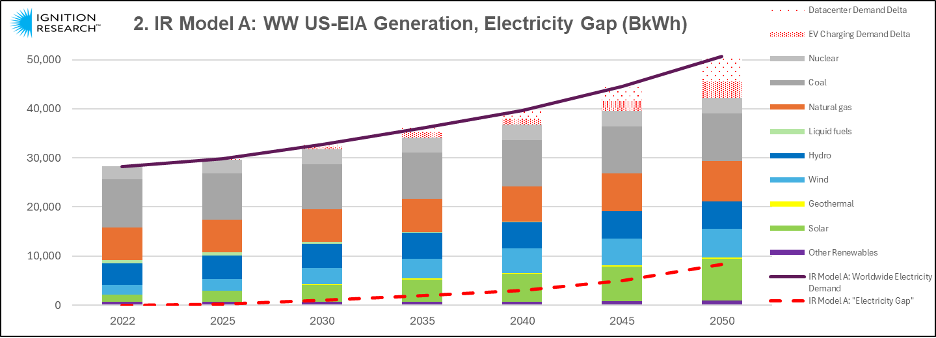Trump Wins – What Does It Mean for Fusion Energy?
How the Trump Administration could influence fusion's role in U.S. Energy
The election results are in, and the fusion industry must look forward to the new Trump administration. The Fusion Report wanted to provide a first look at ways the new administration could impact the future of fusion energy. We are sure this story will evolve, but here is our perspective as of today.
Trump at Face Value
Considering the many statements that President-Elect Trump made leading up to the election about energy, policy, regulations, tariffs, and China, here is how we would assess the future of fusion energy under the upcoming Trump administration.
Trump Statement:
TFR Perspective:
Short Term - We will likely see significant changes in fossil leasing rights on public lands and reductions in regulations.
Long Term - For fusion this likely means an extension of fossil fuel power plants, which will consume power generation opportunities that could have otherwise gone to fusion over the next 20 years.
Trump Statement:
Elon Musk to lead a new government efficiency commission.
TFR Perspective:
Short Term - Musk is a leading proponent of solar and a detractor of fusion energy.
Long Term - He is a big investor in solar, which will likely guide any recommendations to the federal budget process.
Long Term - Wind, biofuels, geothermal, and other renewables will be negatively impacted even though wind farms grew during the first Trump administration.
Trump Statement:
TFR Perspective:
Short Term – The Inflation Reduction Act will presumably not be fully repealed as lawmakers like the job creation in their states.
Long Term – DOE policy and appropriations will be redirected to solar and fossil fuels and we should see significant regulation reductions.
Trump Statement:
Slashing regulations and policies.
TFR Perspective:
Short Term - Reducing regulations could be a boon for fusion energy, potentially accelerating timelines to install fusion machines.
Short Term - This should enable new power lines for deploying fusion power plants.
Trump Statement:
“10% tariff on all U.S. imports and 60% on Chinese-made products”
TFR Perspective:
Short Term – Energy and fusion supply chains will be stressed and costlier since China provides the majority of the energy infrastructure components.
Long Term – This should drive investment in U.S.-based manufacturing to build our energy independence and better compete with China.
Trump Statement:
China Competition and Reshoring
TFR Perspective:
Short Term – Trump has repeatedly stated that we subsidize companies like TSMC and should be tariffing those chips. Some have speculated that the new administration might repeal the US CHIPS and Science ACT. Again, we don’t think this is likely given the public-private joint investments already made and the jobs creation.
Long Term – Protecting U.S. IP and expanding our domestic supply chain will be a focus of policy and legislation. This will probably only apply to U.S. companies and for building factories in the U.S. (think DOE LPO), not to allied nations.
Looking into the Fusion Crystal Ball
While we would not claim a clear crystal ball, we think we can do better than a “Magic 8-Ball.”
Trump Wants to Beat China in Everything – The fusion industry still requires significant funding and support from the federal government and partnership with the DOE and national labs. As the 47th President of the United States, Donald Trump will probably move fusion forward aggressively under his administration.
Fusion Is Inevitable - Global efforts and private investment reached over $9B through 2024 ($7.1B in 2023, according to the FIA, with an additional $2+B more this year,) according to Fusion Energy Base. The technology is being developed by the U.S., allied nations, and China, so we can’t stop it now. The question is whether the U.S. will be leaders, followers, or worse, customers of China.
U.S. Private Investment - U.S. private investments in fusion are ramping up. Pacific Fusion just raised a whopping $900 million Series A round, Focus Energy and Xcimer have added over $200M more this year, and the list goes on. The total amount of money invested in Fusion is now over $9 billion. While Trump will undoubtedly unleash the fossil fuel industry to support short-term increases in U.S. energy generation, fossil fuels alone will not support the growth needed in electrical generation over the next twenty years.
Elon Musk Will Need Fusion For SpaceX - Musk wants fusion propulsion for SpaceX, and NASA has some fusion efforts underway. And now that Trump and Elon are “bros,” and with Trump’s statement that “Elon will be in charge of the government efficiency committee” (chief business bro???), Elon will look to drive the government towards things that can make him money on and support his other ventures. He supports both artificial intelligence (xAI), which is vital for fusion energy development and, obviously, EVs; both will need a LOT of power (see the predictions below) to hit their projected growth rates over the next few decades. Elon can’t make money on fossil fuels (in fact, they would hurt Tesla), so for a guy who pioneered EVs and private rocket service, fusion would seem an obvious play, despite his previous personal statements.
5 Reasons for Trump to Like Fusion Energy
Beating China - Under Trump, China will become this century’s version of the Soviet Union—our archenemy in many endeavors. Fusion gives Trump a real legacy-building opportunity. Letting China win the fusion race could position him as a loser, which he would not like.
American Supply Chain and Job Creation - Unlike photovoltaic (PV), solar, batteries, and wind, fusion can become a high-paying job creation play for Trump—his version of the CHIPS Act, in a sense. Yes, fusion energy is a global effort, but Trump and his team will look at “America First.”
Space Force and SpaceX Partnership—Trump created the Space Force, and fusion-propelled space travel would make our Space Force a “Space System Power” to compete with China’s space program.
Fusion is Not Renewable and Won’t Hurt Big Oil - Donald Trump does not believe in renewables. Still, for utility companies (including those operating nuclear power plants), fusion looks like the investments they are used to making and fits into a long-range plan to scale the power grid. Fusion can help big oil companies because our industry must buy billions of supply chain products made from petrochemical-based parts.
U.S. Fusion Powers Economic Growth & Independence - Fusion is a national and global-level economic force. It can help reshore manufacturing, drive AI, enable jobs, power economic growth, and be a vital strategy for creating sustainable energy and electricity independence.
The U.S. and the rest of the world need more power generation, and it would be better if this energy were also cleaner and cheaper. The U.S. also needs energy independence, and fusion energy should be a significant part of that strategy. Ignition Research predicts that global power demand will grow by 79% through 2050.
Fusion energy should allow the Trump administration to win on multiple fronts. First, it provides a new way for America to lead a significant new business with substantial geopolitical leverage. Second, it will align with the goals of building US supply chains and manufacturing jobs. Third, it will advance the US position in AI and space. Fourth, it has the potential to lower energy costs to drive economic growth.







